« November 2016 | Main | January 2017 »
December 31, 2016
New York Times Square 2017 New Year Eve Celebrations: One Billion People Expected to Watch the Countdown Extravaganza on TOSHIBA VISION

Photo: New Delhi New Year’s Countdown at Times Square on December 31, 2016 in New York City. (Photo by TOSHIBA CORPORATION/Getty Images for TOSHIBA CORPORATION. © 2016 Getty Images.)

Photo: New Delhi New Year’s Countdown at Times Square on December 31, 2016 in New York City. (Photo by TOSHIBA CORPORATION/Getty Images for TOSHIBA CORPORATION. © 2016 Getty Images.)

Photo: Times Square Alliance and Countdown Entertainment, co-organizers of Times Square New Year’s Eve, along with presenting sponsor, Planet Fitness, throw handfuls of confetti from the Hard Rock Cafe marquee as part of the annual confetti test. The colorful event is held in preparation for the release of one ton of confetti at midnight on New Year Eve.
As the clock strikes one minute before midnight on December 31st, all eyes will be on TOSHIBA VISION as it screens the 60-second light and sound countdown extravaganza. One billion viewers are expected to watch the countdown from all around the globe via television and online broadcast.
The countdown party itself will include live music performances by superstar celebrities, such as Mariah Carey, Thomas Rhett, DNCE and Rachel Platten. Also, Bill Nye “the Science Guy” will take to the stage to commemorate the 25th anniversary of ExploraVision, an educational science and technology competition held in North America by Toshiba Corp. and the National Science Teachers Association (NSTA).
During the day, TOSHIBA VISION will showcase international countdowns for major cities in different time zones as follows (all times in EST):
• 10.00am: Tokyo, Japan
• 11.00am: Beijing, China / Singapore / Manila, Philippines
• 12.00pm: Jakarta, Indonesia / Hanoi, Vietnam / Bangkok, Thailand
• 1.00pm: Dhaka, Bangladesh
• 1.30pm: New Delhi, India
• 3.00pm: Dubai, UAE
• 4.00pm: Riyadh, Saudi Arabia / Moscow, Russia
• 5.00pm: Cairo, Egypt / Athens, Greece / Istanbul, Turkey
The hourly countdown for New York will begin at 5.59pm.
Toshiba has been the sponsor for the New York Times Square’s New Year’s Eve celebrations since the 2010 countdown.
|GlobalGiants.Com|







Edited & Posted by the Editor | 10:05 AM | View the original post
December 24, 2016
Season's Greetings from GlobalGiants.Com

Dear GlobalGiants.Com Viewer,
Season’s Greetings and Best Wishes for the Coming Year!
|GlobalGiants.Com|







Edited & Posted by the Editor | 9:46 AM | View the original post
December 22, 2016
Airbus Shortlists 50 University Teams for Fifth Fly Your Ideas Global Student Competition
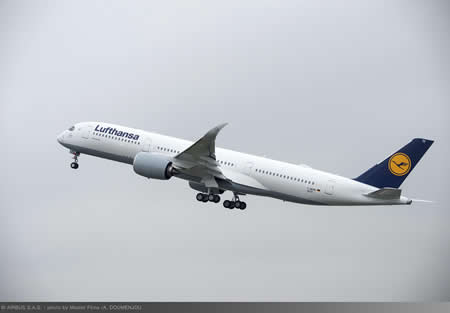
Photo: The first A350-900 for Lufthansa, which performed its maiden flight in November 2016, is part of a 25-aircraft order placed by the German flag carrier. Image provided by & copyright © AIRBUS.
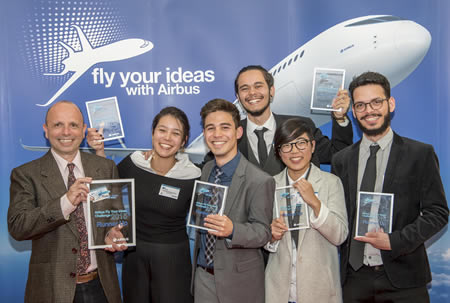
Photo: Team Retrolley from University of Sao Paulo, Brazil, Runners-up of Airbus Fly Your Ideas 2015. From left: Fausto Mascia, Academic mentor University of Sao Paulo, Denise Ikuno, Lucas Otsuka, Tadeu Omae, Maki Shintate, Lucas Neumann. Image provided by & copyright © AIRBUS.
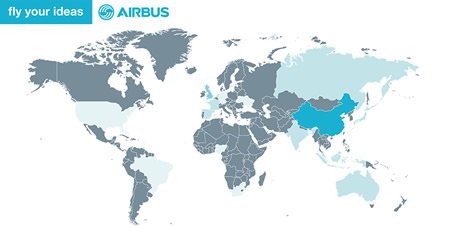
TOULOUSE, France, Dec. 20, 2016 — A record 5,499 students from around the world registered to participate in the fifth edition of Airbus’ Fly Your Ideas, the global student challenge organised in partnership with UNESCO.
A group of 60 Airbus experts and innovators assessed the ideas submitted by 356 teams from 89 countries. The rigorous evaluation process took place at four different Airbus locations in France, Germany, Spain and the UK, with 50 student teams selected to reach Round Two of the competition, starting in January 2017.
The competition is led by teams registered in the Asia-Pacific region. The 50 teams comprise 202 students representing 38 different nationalities. With 52% of teams mixing male and female students, two thirds of all teams are diverse in some way, for example with members coming from different countries or studying different subjects.
Innovative ideas from the 50 chosen teams include robotic luggage trolleys, passenger seats which can be boarded outside the aircraft, new solutions for energy harvesting and virtual reality applications.
“Fly Your Ideas is unique and we are proud of the company-wide engagement of Airbus employees who support the competition, either as assessors, mentors or experts”, says Charles Champion, Airbus Executive Vice President Engineering. “We are offering students the rare opportunity to interact directly with senior specialists from across the business. In turn, these experts will benefit from their direct interaction with talents from across the globe, all sharing the same passion for one of the world’s most exciting industries.”
Each of the teams has 100 days to refine and develop their ideas. The top five teams to make it through to Round Three will spend a week at the “ProtoSpace” based at the Airbus HQ in Toulouse to prototype, test and visualise their ideas using state-of-the art equipment with personalised guidance from Airbus. The winning team will receive a €30,000 prize and the runner up team will receive €15,000 at a live prize giving event in May 2017.
Key figures Fly Your Ideas 2017:
• Number of ideas submitted: 356
- Number of countries involved: 89
- Number of universities involved: 348
- Top 5 countries: India - 64 teams, China & HK - 44 teams, Spain - 29 teams, Indonesia - 24 teams, United Kingdom - 20 teams
• Number of ideas chosen: 50
- Number of countries involved: 41
- Number of universities involved: 57
- Top 5 countries: China & HK - 9 teams, Singapore - 5 teams, United Kingdon - 4 teams, Australia - 3 teams, Indonesia - 3 teams
|GlobalGiants.Com|
#Airbus and #UNESCO: The Fly Your Ideas Partnership. #HigherEd #Universities @Airbus @UNESCO https://t.co/jRaoi9awqu
— GlobalGiants.Com (@GlobalGiants) December 23, 2016
Watch as the #A350-1000 performs its maiden flight - Thanks to all who joined us yesterday for this industry milestone! #A350FF pic.twitter.com/nQZrxqRT6l
— Airbus (@Airbus) November 25, 2016







Edited & Posted by the Editor | 4:33 AM | View the original post
December 16, 2016
India Minister updates Parliament on Universities in the Country

Photo: A Section of Parliament House, New Delhi. Image Credit: Ankur Gallery.
New Delhi, India - December 15, 2016 — India Minister of State for Human Resource Development, Dr. Mahendra Nath Pandey, today, in separate written statements, gave the following information to Rajya Sabha (upper house) about universities in the country.
• “As per All India Survey on Higher Education 2015-16, the number of universities in the country is 799, and out of them 386 Universities came into existence since 2001. The number of students and teachers in the institutions of higher education in the country during academic year 2015-16 are 3.46 Crore (one crore= ten million) and 15.19 Lakh (one lakh= one hundred thousand) respectively.”
• “The University Grants Commission (UGC),” the Minister explained, “is responsible for promotion and co-ordination of University Education, determination and maintenance of standards of teaching, examination, and research in Universities. To ensure adequate quality teaching faculties in Universities/Colleges, the UGC has notified rules and procedures containing Academic Performance Indicators (APIs). API scores are mandatory qualifying benchmarks for Career Advancement Scheme and for direct recruitment of teachers and other academic staff in Universities and Colleges.”
• The Minister gave the following information on Central Universities.
“Central Universities,” the Minister stated “are statutory autonomous bodies which are established under their respective Acts of Parliament. Subordinate legislation in respect of Central Universities includes Statutes, Ordinances and Regulations framed under the respective Acts by the Universities from time to time.”
“Along with the Act, the First Statutes of the Central Universities are passed by the Parliament. The Central Universities can amend, add or repeal any Statute with the approval of the Visitor. Ordinances and Regulations are also made by the Universities which should be consistent with the Act and Statutes of the university concerned,” the Minister explained.
The Minister said that at present there are 41 Central Universities in the country.
“In a meeting held with the Vice Chancellors of Central Universities,” the Minister elaborated, “the issues relating to improvement of quality of education, promoting research and innovation, faculty development, collaboration with the industry and research laboratories, effective use of technology in teaching learning process, and mandatory accreditation were discussed at length.”
The Minister elucidated that the University Grants Commission (UGC) has introduced the following schemes/regulations/guidelines/programmes for the improvement of quality and standards in the Central Universities:
- Mandatory accreditation of Universities with National Assessment and Accreditation Council (NAAC).
- Periodic updation of curriculum.
- Prescription of minimum qualification for appointment of teachers and other academic staff.
- Establishment of Internal Quality Assurance Cell.
- Introduction of Semester System.
- Introduction of choice-based credit system.
- Introduction of Faculty Recharge programme to augment research and teaching resources.
- Liberal financial support under the schemes of University with Potential for Excellence.
• Cashless Society - Digital Financial Literacy Campaign
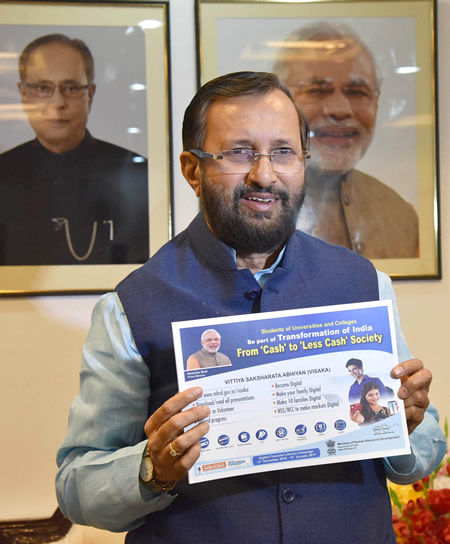
Photo: The Union Minister for Human Resource Development of India, Mr. Prakash Javadekar, launching the Digital Financial Literacy Campaign, called Vittiya Saksharta Abhiyan - VISAKA, at a press conference, in New Delhi, on December 15, 2016. Image provided by the Press Information Bureau, Government of India.
Meanwhile, the Union Minister for Human Resource Development of India, Mr. Prakash Javadekar, today launched Digital Financial Literacy Campaign at a Press Conference in New Delhi. Mr. Javadekar said that about 25,00,000 students of higher educational institutions are expected to volunteer to be associated with the campaign.
Mentioning this campaign as biggest digital transformation of country after Independence, Minister said that Government officers, Bankers and administrators will be roped in to impart training to students. Students, in turn, will educate their family members and other families in their neighbourhood, motivating them to go in for digital payment.
|GlobalGiants.Com|
Students of Univs & Colleges be part of #TransformingIndia from 'Cash' to 'Less Cash'.Visit https://t.co/R0j8Pz5Grb to enroll as volunteers. pic.twitter.com/UVSS1oqUHa
— Prakash Javadekar (@PrakashJavdekar) December 15, 2016
@PrakashJavdekar @PIB_India @PMOIndia @HRDMinistry
— GlobalGiants.Com (@GlobalGiants) December 17, 2016
Thank you for your Tweet, Sir. Find it embedded here: https://t.co/nh7iPn48zg







Edited & Posted by the Editor | 7:52 AM | View the original post
December 13, 2016
Mastercard and Pine Labs Collaborate on Safe, Secure and Speedy Contactless Payments in India
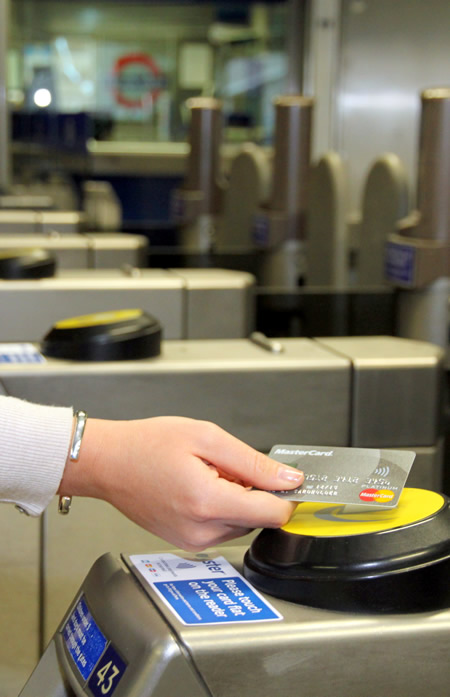
Photo: Transport for London: Commuter paying with a MasterCard contactless card. Touching a reader using a MasterCard contactless card as a safe, simple and smart way to pay. Image provided by & copyright © MasterCard News.

New Delhi, India - Mastercard has announced its partnership with Pine Labs, the largest payment facilitator for electronic Point of Sale (PoS) solutions in India to roll out more than 26,000 contactless terminals across the key merchant stores in the country over the next 12 months.
Powered by Mastercard contactless technology, the merchants across Quick Service Restaurants (QSR), retail stores, cinemas and super markets will now be able to offer contactless terminals as an alternative method of payment to customers, allowing them greater ease and convenience of payments. The contactless payments solution will also help merchants build greater efficiency in managing their costs and time by way of reducing check-out time at the counters and costs related to handling of cash.
Cashless transactions are on the rise, driven by increasing availability of contactless cards and introduction of new forms of payment technology in the country.
“Mastercard’s contactless technology offers cardholders multi-level protection coupled with speed and convenience. Mastercard contactless payments are accepted at more than 3 million merchant locations in 77 countries worldwide. Our partnership with Pine Labs will help us build a safe and secure contactless payments ecosystem in the country. This is aligned with Mastercard’s vision of a world beyond cash and using technology to make payments safer, simpler and smarter for the consumers.” said Murali Nair, Senior Vice President, Market Development, South Asia, Mastercard.
Mastercard has been at the forefront of driving contactless payments globally. Contactless payments allow customers to make everyday purchases by simply tapping their contactless-enabled card or device on a contactless-enabled reader. Contactless acceptance is an excellent choice for any merchant, especially in environments where speed and convenience are valued and cash is currently the dominant payment method, such as fast food outlets, supermarkets, quick-service restaurants, convenience stores, and vending machines.
More than 60,000 Retailers across India depend on Pine Labs to securely and reliably manage their Payment Acceptance. Pine Labs payment solutions simplify acceptance of all kinds of payments at PoS terminals, be it Credit/Debit Cards, EMI, Reward Points, Gift Vouchers, or e-Wallet.
|GlobalGiants.Com|







Edited & Posted by the Editor | 12:48 PM | View the original post
December 12, 2016
Incoming United Nations Secretary-General Takes Oath of Office
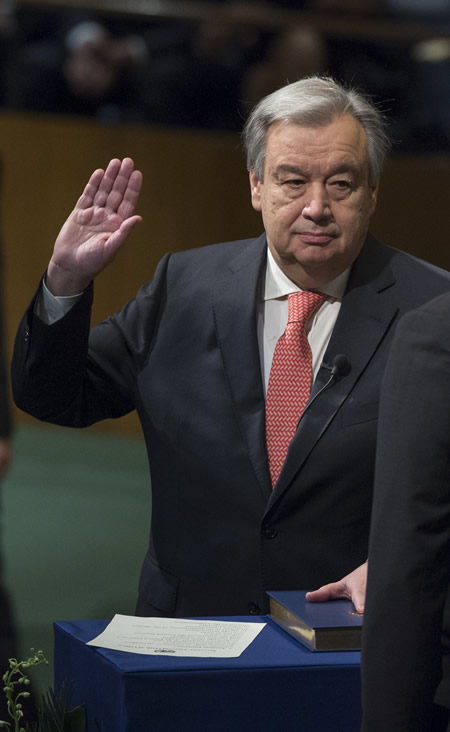
Photo: António Guterres, Secretary-General-designate of the United Nations, takes the oath of office for his five-year term which begins on 1 January 2017. The oath was administered by Peter Thomson, President of the seventy-first session of the General Assembly, on the Charter of the United Nations. 12 December 2016. United Nations, New York. UN Photo/Eskinder Debebe.
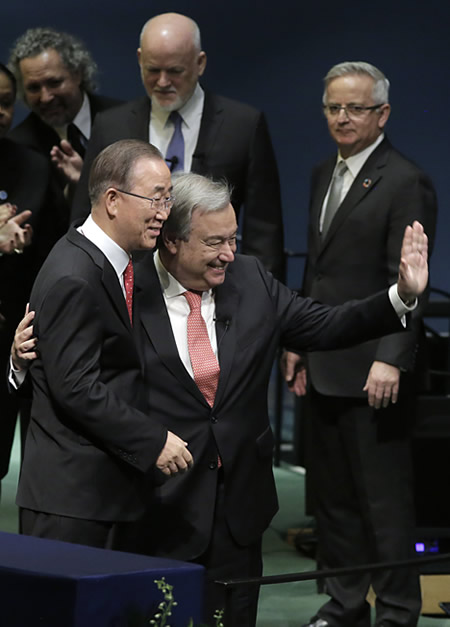
Photo: António Guterres, Secretary-General-designate of the United Nations, took the oath of office for his five-year term, which begins on 1 January 2017. The oath was administered by Peter Thomson, President of the seventy-first session of the General Assembly, on the Charter of the United Nations.
Mr. Guterres (foreground right) with Secretary-General Ban Ki-moon after taking the oath.
12 December 2016. United Nations, New York. UN Photo/Evan Schneider.

Photo: The New York Philharmonic, conducted by Music Director Alan Gilbert, paid special tribute in the General Assembly Hall to UN Secretary-General Ban Ki moon as he prepares to conclude his 10-year term. The concert was also an opportunity for a musical welcome to his successor, António Guterres.
The programme included Mozart’s Clarinet Concerto, with Principal Clarinet Anthony McGill as soloist; and Beethoven’s Symphony No. 5.
A view of a banner of the concert at the side of the UN seal in the General Assembly Hall during the performance. 14 December 2016. United Nations, New York. UN Photo/Manuel Elias.
|GlobalGiants.Com|







Edited & Posted by the Editor | 4:56 PM | View the original post
December 10, 2016
City Traffic: Audi networks with Traffic Lights in the USA
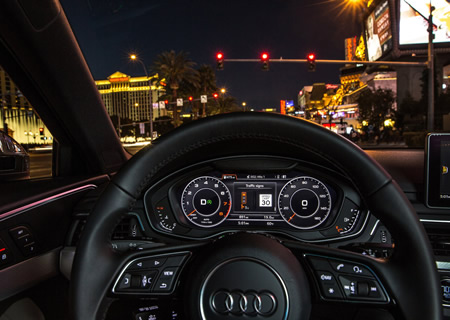
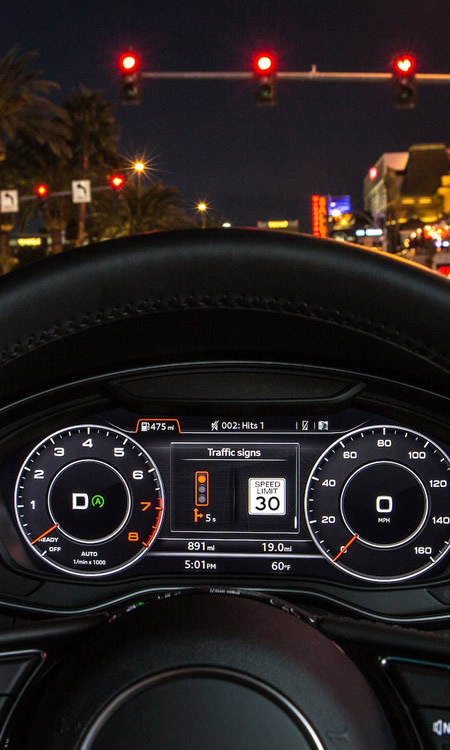
Photos: “Time-to-Green”: In the Audi virtual cockpit or head-up display, drivers see whether they will reach the next light on green while traveling within the permitted speed limit. Image provided by & copyright © AUDI AG.
If you know in advance when a traffic light will switch from red to green, your driving is more relaxed and efficient. Audi is the first automobile brand to connect the car to the city infrastructure - an important step towards autonomous driving. In Las Vegas, starting immediately, the Audi A4 and Q7 models can display traffic-light phases directly in the car. Further U.S. cities will follow, and introduction of the system is planned in Europe. Traffic Light Information optimizes traffic flow, saves valuable time and reduces environmental impact.
Audi of America is cooperating with several cities in North America to upgrade the infrastructure for V2I technology. “For the first time, our cars are exchanging data with traffic infrastructure in real time. Drivers can adapt their behavior to the situation and move through city traffic in a much more relaxed and controlled way,” says Andreas Reich, head of Electronics Pre-Development at AUDI AG. “We increase energy efficiency when we connect our Audi models to smart cities. Further V2I services will follow, making the car into an interactive mobile device. We see autonomous driving as the end of this development.”
As a first step, all Audi A4 and Q7 models produced for the U.S. market since June 2016 and equipped with Audi connect will have this function on board. In the USA, municipal traffic management centers will communicate the traffic-light data to Audi’s project partner Traffic Technology Services TTS. Here the data are prepared and sent to the on-board computer in the Audi via a fast Internet connection, for example 4G/LTE, in real time.
The first function of the Traffic Light Information V2I component is called Time-to-Green. In the Audi virtual cockpit or head-up display, drivers see whether they will reach the next light on green while traveling within the permitted speed limit. If not, a countdown is provided of the time remaining until the next green phase - and drivers can take their foot off the gas pedal in good time. Pilot projects in Europe have shown that drivers exercise more foresight thanks to this information about traffic lights. This has a beneficial overall effect on traffic flow. “In our tests the the number of cars that had to brake to a standstill in traffic fell by around 20 percent. This saved time for the driver and also made fuel savings of about 15 percent in the pilot project,” says Michael Zweck, project manager for Audi Traffic Light Information.
First of all, Audi customers will use this service. The development work that Audi is investing in traffic-light systems will also benefit customers of other brands in future. The increasing spread of the technology will help city traffic planners to understand the causes of hold-ups and optimize the phasing of traffic lights.
In future Traffic Light Information could be linked up to smart navigation and used for new powering concepts. For example, “green waves” in traffic-light sequences could be incorporated in route planning. It is also conceivable that Audi e-tron models could make greater use of braking energy by charging the battery as they decelerate at a red light.
Audi also intends to introduce the technology in Europe. In Berlin, Ingolstadt, Garmisch-Partenkirchen and Verona there have already been extensive pilot projects. In Berlin alone, some 700 traffic lights in the inner city have been connected to the service. Across Europe, however, unified data standards and digital infrastructure do not exist: “In Europe highly diverse traffic technology is in use, as the infrastructure has developed locally and decentrally. We are working on harmonization of the data that have been prepared. After that has been done, we can provide Traffic Light Information in Europe too,” Michael Zweck announced.
|GlobalGiants.Com|
2017 #Audi A4 all-road Driver Assist https://t.co/4yBVfYqtql
— GlobalGiants.Com (@GlobalGiants) December 10, 2016







Edited & Posted by the Editor | 11:31 AM | View the original post
December 7, 2016
IWC PORTUGIESER CHRONOGRAPH RATTRAPANTE

Photo: Portugieser Chronograph Rattrapante (Ref. 3712) from IWC Schaffhausen.

Photo: Italian actress Anna Ferzetti and Italian actor Pierfrancesco Favino attend the IWC “Come Fly with us” Gala Dinner during the launch of the Pilot’s Watches Novelties from the Swiss luxury watch manufacturer IWC Schaffhausen at the Salon International de la Haute Horlogerie (SIHH) 2016 on January 19, 2016 in Geneva, Switzerland. (PHOTOPRESS/IWC/Chris Jackson).

Photo: Turkish actress and IWC brand ambassador, Tuba Buyukustun, attends the fifth IWC Filmmaker Award gala dinner at the 13th Dubai International Film Festival (DIFF), during which Swiss luxury watch manufacturer IWC Schaffhausen celebrated its long-standing passion for filmmaking at One And Only Royal Mirage on December 8, 2016 in Dubai, United Arab Emirates. (Image provided by IWC Schaffhausen. Photo by Anthony Harvey/Getty Images.)

Photo: Tunisian Actress, Lawyer, and UN World Food Programme Ambassador, Hend Sabry, attends the fifth IWC Filmmaker Award gala dinner at the 13th Dubai International Film Festival (DIFF), during which Swiss luxury watch manufacturer IWC Schaffhausen celebrated its long-standing passion for filmmaking at One And Only Royal Mirage on December 8, 2016 in Dubai, United Arab Emirates. ((Image provided by IWC Schaffhausen. Photo by Anthony Harvey/Getty Images.)
|GlobalGiants.Com|







Edited & Posted by the Editor | 6:59 AM | View the original post
December 5, 2016
Circular Economy Principles could help India realise $624bn
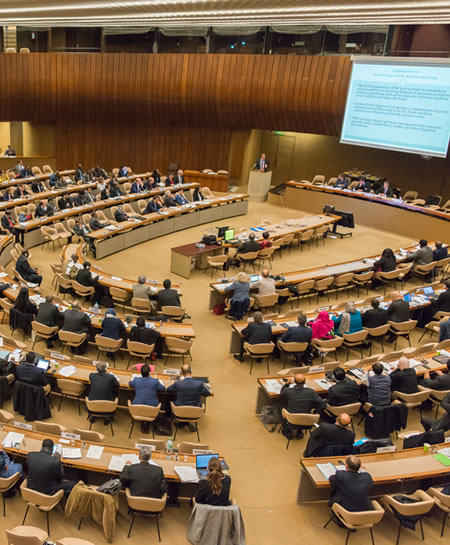
Photo: UNCTAD 10th Debt Management Conference. Over 350 participants from over 100 countries, regional institutions and from the civil society participated in the 10th UNCTAD Debt Management Conference. Image provided by & copyright © UNCTAD.
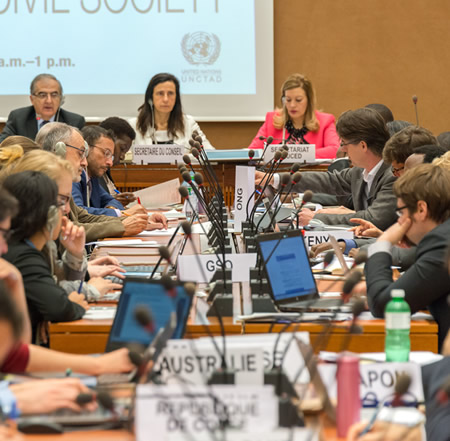
Photo: UNCTAD 14 - 1st hearing with civil society. The hearing with civil society, held on 6 April 2016, provided a platform for organizations to contribute to discussions on what UNCTAD’s work priorities should be for the next four years. Image provided by & copyright © UNCTAD.
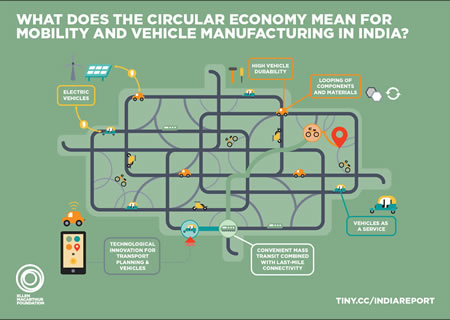
Geneva, Switzerland — 5 December 2016 - India could save $624 billion a year by 2050 if it adopts circular economy principles rather than following a conventional but more wasteful development path, according to a new report on India produced by the Ellen MacArthur Foundation in association with UNCTAD.
The Ellen MacArthur Foundation, an economic research and innovation think tank, promotes the concept of a “circular economy”, which is restorative and regenerative by design, and which aims to keep products, components and materials at their highest utility and value at all times.
“Today’s linear ‘take, make, dispose’ economic model which relies on large quantities of cheap, easily accessible materials and energy, is increasingly challenged in the long term. A circular economy is an attractive and viable alternative that businesses are already exploring,” the Ellen MacArthur Foundation said.
Pilot projects have already shown these practices contributing towards cost savings of hundreds of millions dollars per year.
“Increasing circularity can help unlock efficiencies, opening up urgent investment opportunities and delivering environmental, economic and social gains,” Guillermo Valles, Director for International Trade in Goods, Services and Commodities, UNCTAD said. “Lessons from this work in India serve as an important example for other developing countries seeking to meet both the Sustainable Development Goals (SDGs) and commitments in the Paris Agreement.”
India’s ambassador to the United Nations in Geneva, Ajit Kumar, said: “India is earnestly working towards finding ways to improve the living standards of its citizens, compatible with its resources. Sectors such as mobility, agriculture and construction will play a crucial role in the future growth of India. The suggestions contained in the report are therefore, noteworthy and timely.”
Dame Ellen MacArthur, founder of the Ellen MacArthur Foundation, said: “This report builds on the Foundation’s previous analysis of the circular economy opportunity for Europe, by exploring for the first time the potential of applying the circular framework in a fast-growing market context. With its existing circular mindset and strong digital backbone, India can reap significant economic and societal benefits, embarking on a positive development path as it focuses on regenerative practices.”
The report says that better product design and innovative business models could generate cost savings and increase profits for businesses, in parallel with the shift to digitally enabled platforms for asset sharing, such as Zipcar, in which procuring services replaces owning goods.
A shift from selling cars to providing vehicles as a service could create new revenue streams for India’s car industry. Only about 2% of the Indian population currently owns a car, but the demand for mobility is increasing, the report says.
Using data from UNCTAD, the report estimates that India could save costs amounting 11% of its current GDP in 2030 and 30% of GDP in 2050 if proven circular approaches were adopted by the public and private sectors. Greenhouse gas emissions could be cut by 44%.
The report was launched in New Delhi, India, on 5 December, and an international briefing will be held in Geneva, Switzerland, on 12 December.
|GlobalGiants.Com|
.@UNCTAD ambassador Guillermo Valles starting the briefing on our #circulareconomy in #India report @circulareconomy @jossbleriot pic.twitter.com/UU0TapXv0X
— Sven Herrmann (@svenherrmann_) December 12, 2016
In Geneva for a briefing on our latest research - what would a #circulareconomy mean for #India? @UNCTAD https://t.co/wP1POVn8T4 pic.twitter.com/E6tDRzvo0w
— Ellen MacArthur Fdn. (@circulareconomy) December 12, 2016
@circulareconomy @UNCTAD
— GlobalGiants.Com (@GlobalGiants) December 12, 2016
Thanks for your tweet on #circulareconomy in #India. https://t.co/n1C7XL9Cc9







Edited & Posted by the Editor | 2:19 PM | View the original post
December 4, 2016
Carrera y Carrera presents Invierno (Winter) "Iceberg" Collection







Photos: Carrera y Carrera’s Invierno (Winter) Iceberg collection. To create the futuristic-looking jewelry pieces with unusual geometry of this new line named Iceberg, Carrera y Carrera designers have drawn inspiration from the Palacio de Cristal rising above Retiro pond in Madrid, Spain. (Images provided by & copyright © Carrera y Carrera.)
|GlobalGiants.Com|







Edited & Posted by the Editor | 1:10 PM | View the original post
December 2, 2016
China and India Lead in the Times Higher Education BRICS & Emerging Economies University Rankings 2017
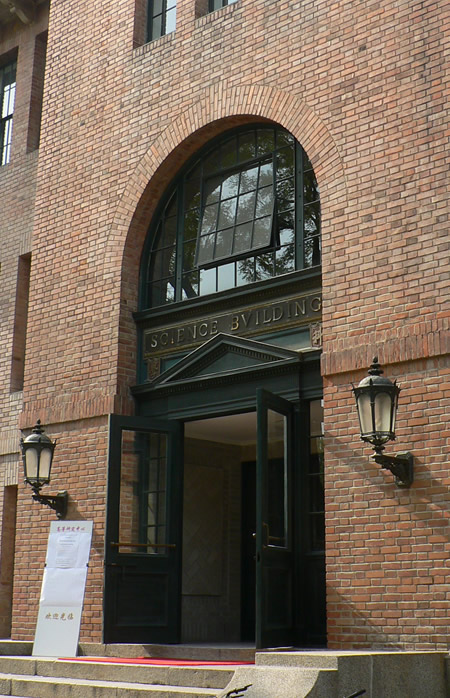
Photo: Entrance to the Science Building, Tsinghua University, Beijing, China. Image Credit: Milan Tvrdy.
London — India has increased its share of the top universities in the Times Higher Education BRICS & Emerging Economies University Rankings 2017, but China still has the highest density of leading institutions in the developing world.
The Indian Institute of Science, Bangalore, breaks into the top 15 for the first time this year, in 14th place, thanks to an improved teaching environment and greater research influence.
Panjab University, Chandigarh, which had topped in India at No. 13 in 2014, and had later slipped to No. 39 in 2015 and to No. 121 in 2016, has, however, further slipped and is now placed at No. 135.
Meanwhile, Indian Institute of Technology Bombay has reached its highest position after climbing three places to 26th, boosted by improved scores across all the five pillars underlying the methodology.
Overall, the country has 27 universities in the top 300 ranking, 19 of which make the top 200 (up from 16 last year), making it the second most-represented nation in the table.
Anurag Kumar, director of the Indian Institute of Science, said that increased government science funding in recent years has enabled the university to enhance grants for new hires, invest in state-of-the-art infrastructure and encourage interdisciplinary research. The institution is working hard to attract more scientists from other countries, he added.
“This growing talent pool augurs well for the country,” he said. “The government is doing its part by enhancing its education and research budget across the board.”
However, Richard Everitt, director of education at British Council India, warns that “reform is slow in India”, and although the country has one of the biggest higher education systems in the world and “some good institutions”, it still “doesn’t perform well on a global platform”.
Despite India’s gains, however, China still dominates the list, taking 52 - or more than one in six - places in the top 300. Six of these make the elite top 10, including Fudan University, which rose 11 places to reach sixth place this year, and Peking and Tsinghua universities, which hold on to the top two spots for the fourth year running.
While the two Asian giants have improved their showing, the performance of the other BRICS nations is waning, largely because of increased competition as a result of expanding the list to rank 300 universities from 41 countries, up from 200 institutions in 35 nations last year.
Brazil no longer has a university in the top 10, as the University of Sao Paulo slips four places to 13th, its lowest ever position, while half of South Africa’s eight universities have fallen.
Russia’s performance is more mixed; while 10 of its 24 universities have dropped places, Lomonosov Moscow State University holds on to third place amid increasing competition from China, and the Moscow Institute of Physics and Technology climbs 81 places to 12th, thanks to an improved performance across teaching, research, knowledge transfer and international outlook.
The THE BRICS & Emerging Economies University Rankings use the same 13 performance indicators as the flagship World University Rankings but are re-calibrated to reflect the development priorities of universities in emerging economies.
BRICS & Emerging Economies University Rankings 2017
TOP 10
- Peking University — China
- Tsinghua University — China
- Lomonosov Moscow State University — Russian Federation
- University of Cape Town — South Africa
- University of Science and Technology of China — China
- Fudan University — China
- Shanghai Jiao Tong University — China
- University of the Witwatersrand — South Africa
- Zhejiang University —Â China
- National Taiwan University — Taiwan
BRICS & Emerging Economies University Rankings 2017
INDIA
BRICS RANK — UNIVERSITY
- 14 — Indian Institute of Science, Bangalore
- 26 — Indian Institute of Technology, Bombay
- =32 — Indian Institute of Technology, Delhi
- =32 — Indian Institute of Technology, Kanpur
- 35 — Indian Institute of Technology, Madras
- =62 Indian Institute of Technology, Roorkee
- 71 — Indian Institute of Technology, Kharagpur
- 99 — Jadavpur University
- 106 — Indian Institute of Technology, Guwahati
- =107 — Tata Institute of Fundamental Research
- =109 — University of Delhi
- 135 — Panjab University, Chandigarh
- 140 — Tezpur University
- =143 — Savitribai Phule Pune University
- =157 — Aligarh Muslim University
- 179 — University of Calcutta
- =186 — Sri Venkateswara University
- 195 — National Institute of Technology Rourkela
- =196 — Birla Institute of Technology and Science, Pilani
- 201-250 — Acharya Nagarjuna University
- 201-250 — Amrita University
- 201-250 — Andhra University
- 201-250 — Osmania University
- 251-300 — Amity University
- 251-300 — Cochin University of Science and Technology
- 251-300 — Maharaja Sayajirao University of Baroda
- 251-300 — Manipal University
|GlobalGiants.Com|
BRICS & Emerging Economies Rankings 2017: should emerging economies nurture world-class universities? https://t.co/4AsD9wigQQ #thebrics
— TimesHigherEducation (@timeshighered) December 1, 2016
Universities from 41 countries make our fourth annual #THEBRICS ranking. 2017 results out in just TWO HOURS! (30 Nov, 9pm GMT) pic.twitter.com/I7wmY3ftKA
— World Uni Rankings (@THEworldunirank) November 30, 2016







Edited & Posted by the Editor | 12:38 PM | View the original post
December 1, 2016
United Nations Secretary-General at New York Society for Ethical Culture
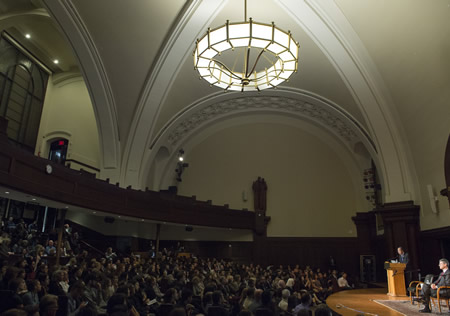
Photo: UN Secretary-General Ban Ki-moon (at podium) speaks at Ethics in Action: “The UN’s 17 Sustainable Development Goals” at New York Society for Ethical Culture. 29 November 2016. New York, USA. UN Photo/Eskinder Debebe.
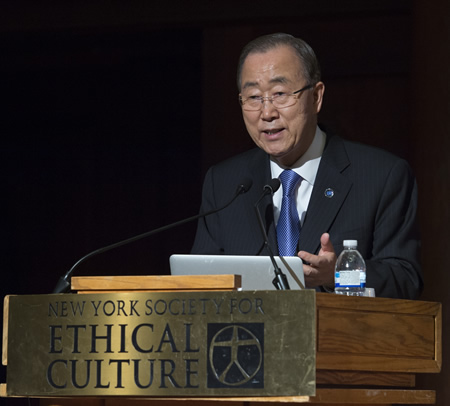
Photo: UN Secretary-General Ban Ki-moon speaks at Ethics in Action: “The UN’s 17 Sustainable Development Goals” at the New York Society for Ethical Culture. 29 November 2016. New York, USA. UN Photo/Eskinder Debebe.
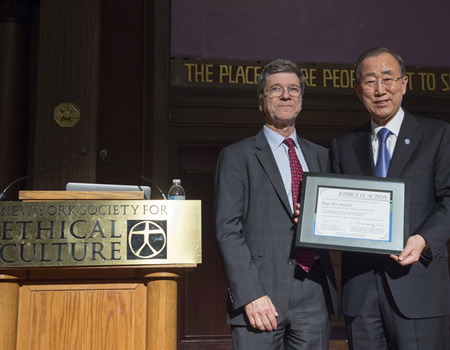
Photo: UN Secretary-General Ban Ki-moon (right) attends Ethics in Action: “The UN’s 17 Sustainable Development Goals” at New York Society for Ethical Culture. On the left is Jeffrey Sachs, Special Adviser to the Secretary-General on the Millennium Development Goals (MDGs). 29 November 2016. New York, USA. UN Photo/Eskinder Debebe.
|GlobalGiants.Com|







Edited & Posted by the Editor | 10:02 AM | View the original post







